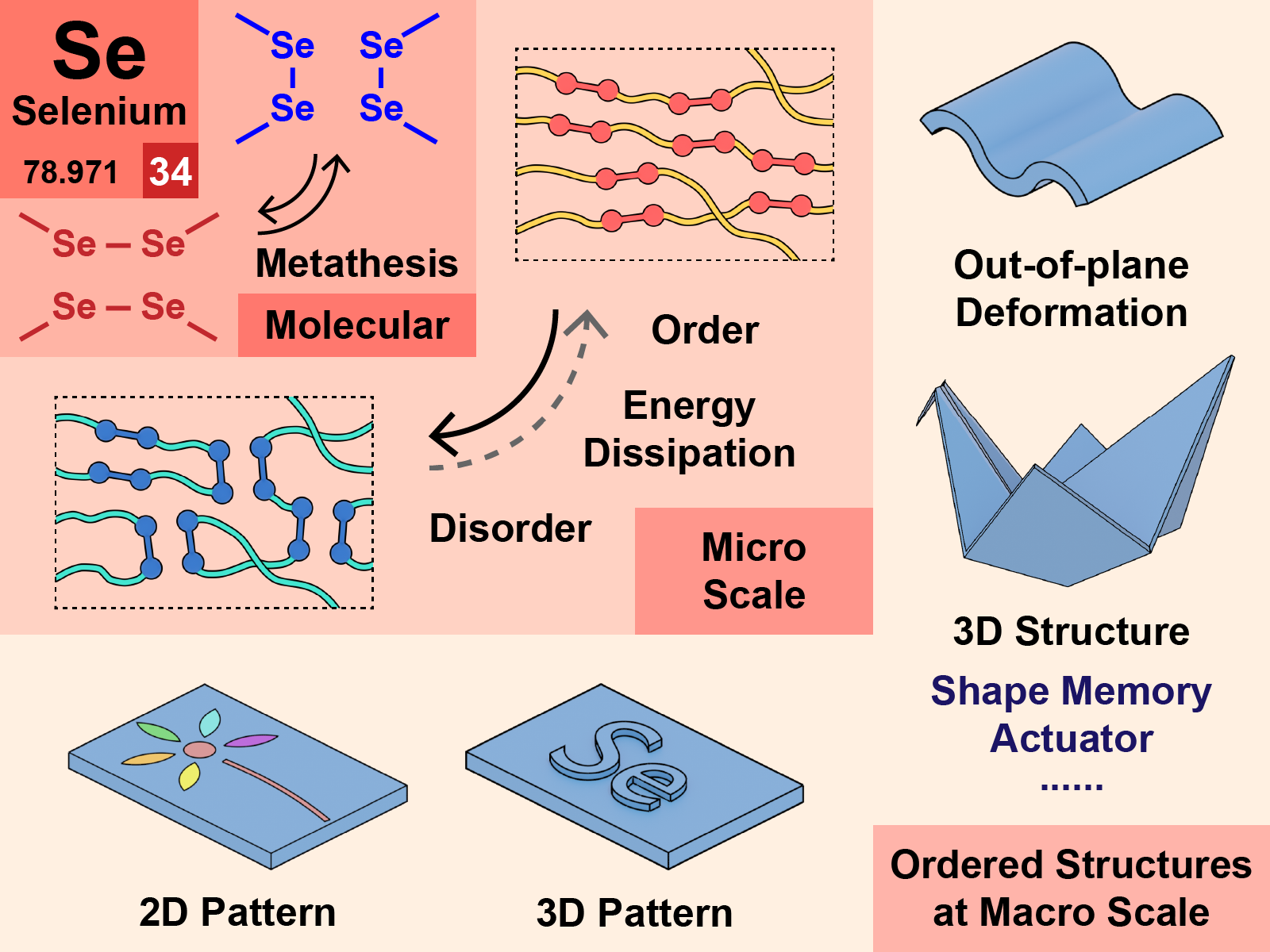Yizheng Tan and Huaping Xu*
Acc. Mater. Res.; 2024, 5, 739
The success of living systems lies in using mild conditions to construct diverse structures by reducing energy barriers that need to be overcome. However, the most powerful processing methods developed by humans, such as integrated die casting and additive manufacturing, are either energy-consuming or time-consuming. Hence, it is very attractive and environmentally friendly to use simple, pre-built, programmable components and transform them into structures with various functions by using mild processing methods. Dynamic covalent bonds, which can transform the entire structure by breaking a few low-energy bonds in the material, reduce the energy required to be input and dissipated when constructing ordered structures, making them an important tool for developing programmable materials with mild processing conditions.
The challenges in this field lie in improving the accessibility, efficiency, and batch-processing capability. The establishment of order relies critically on selective energy input or dissipation. In this context, ‘order’ refers to a thermodynamic state that deviates from equilibrium, exemplified by a temperature gradient or specific spatial distribution of particles, which simultaneously increases systemic order and reduces entropy. To forge such ordered systems or structures, energy input or dissipation must be selective rather than uniform. However, selectivity necessitates patterned inputs or stimuli—such as digital light processing, templating, or additive manufacturing—which are inherently customized and thus not readily scalable for mass industrial production. Consequently, the pivotal solution lies in minimizing the reliance on patterned stimuli. For example, the accessibility and scalability of flood illumination are superior to digital light processing. Concurrently, when reducing the usage of patterned stimuli, we need to increase the dissipation rate between multiple materials that can be integrated together to construct ordered structures, which is an essential aspect for improving efficiency.
This account summarizes how our research group uses the dissipative characteristics of selenium and the information density of light to achieve selective energy input and dissipation in 2D-plane and 3D-space. In this process, we propose a series of unique strategies for ordered structure programming, such as interfacial, unconstrained, or modular methods. These methods either reduce the usage of patterned stimuli, or improve the efficiency, and ultimately reduce the time of structure programming with non-patterned stimuli to within minutes. Moreover, we also look forward from the perspective of chemical design, to illustrate how selenium and its derived dynamic covalent bonds can accelerate the rate of energy dissipation, increase the difference of dissipation rate between the dissipation and non-dissipation areas, and further reduce the time required to structure programming to within seconds.

